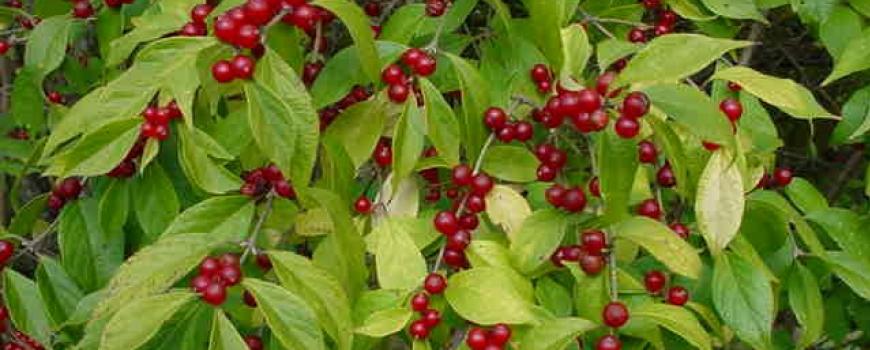One of the strongest threads that knits together an ecological community is the transfer of energy in the form of food between individuals. We’ve already seen an example of a predator-prey relationship between the insects and the birds around the wetland. A series of predator-prey relationships comprise a food chain. The birds that consume the insects around the wetland are in turn hunted by larger animals such as the fox and coyote, both of which have dens on the property.
The introduction of invasive honeysuckle is altering one such food chain in this section of the woods. Each May, we record many nesting birds here during our annual nesting bird survey including brown thrashers, catbirds and cedar waxwings. As you make your way to the next stop, you will see dense thickets of honeysuckle. In areas where this species has invaded the shrub layer, cardinals will use honeysuckle as a substitute food source and nesting site. However, honeysuckle does not afford the birds the same protection from predators as do native shrubs, making the cardinal easier prey for the fox. The effect this disruption will eventually have on cardinal populations is yet to be seen.
We replace the honeysuckle after we remove it with native shrubs such as hazelnut (Corylus americanum). The wildlife use this plant for food and shelter, and it helps guard against re-invasion by honeysuckle.





